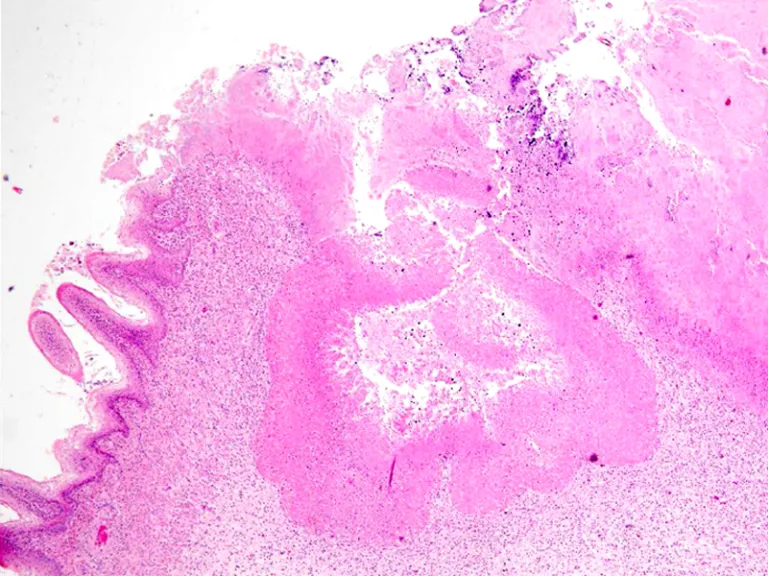Enzootic hematuria in cattle from Northeastern Brazil
DOI:
https://doi.org/10.24070/bjvp.1983-0246.009012Keywords:
cattle diseases, hematuria, urinary bladder, neoplasia, bracken fern, Pteridium arachonoideumAbstract
Two outbreaks (A and B) of bovine enzootic hematuria in Bahia in the period 2012-2013 were described. In the outbreak A, a cow was necropsied and 27 cattle were slaughtered in a slaughterhouse, and the second outbreak two cattle were necropsied. In the outbreak A of a cattle herd 28 mixed breed, approximately two-years-old, three had hematuria for about three months and progressive weight loss. Grossly, the main findings in the bladder were petechiae, papillomatous formations, thickening areas of mucosa white and red nodules. In 2/28 cattle there were no microscopic changes in the urinary bladder, whereas 26/28 cattle had some kind of change. In four of these cattle neoplastic changes (2 cases with hemangioma, 1 with cavernous hemangioma and hemangiosarcoma, and 1 with transitional cell carcinoma) were observed. In the outbreak B, 42 cattle from a herd consisting of 278 Nelore cattle, with approximately four-years-old, presented clinical signs characterized by weakness, anemia, weight loss and intermittent hematuria. Of the 42 affected cattle, 23 died and two were necropsied. At necropsy, the main changes were anemia and marked wrinkling and diffuse thickening of the bladder mucosa, associated with multiple focal hemorrhages. Microscopically lesions consisted of benign angioblastic proliferation, urothelial carcinomas, hemangiomas and hemangiosarcoma. The diagnosis of bovine enzootic hematuria was based on clinical, pathological and epidemiological findings. The study showed that bovine enzootic hematuria caused by Pteridium arachnoideum is a diagnosis to be considered in cattle in Southwestern region of the State of Bahia, Brazil.


